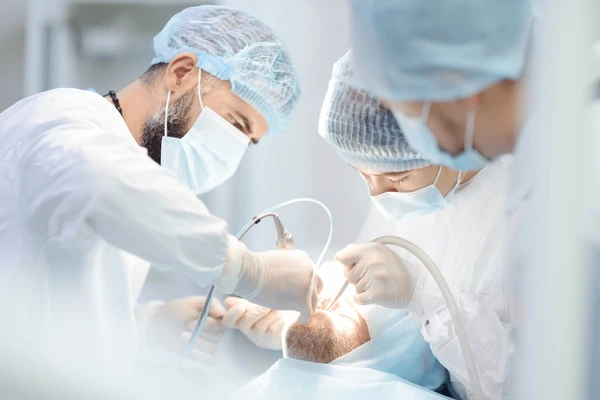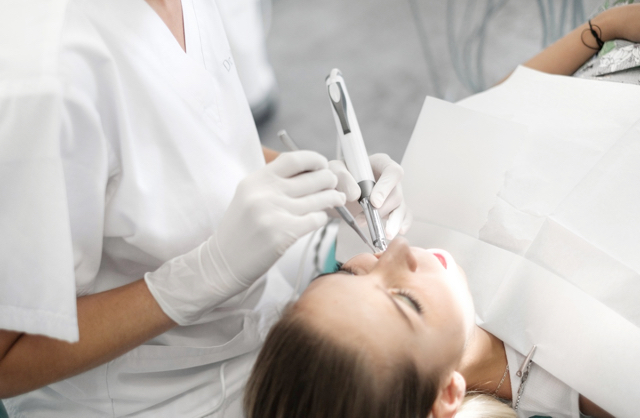
What are the different types of dental anesthesia and how are they used?
Dental anesthesia plays a vital role in patient comfort during oral procedures. Reducing or eliminating the sensation of pain, reassuring anxious patients, providing a serene experience during treatment: these are just some of the reasons that have led to the development of various techniques adapted to each situation. In this article, discover the main types of anaesthesia used by dentists, their indications according to the patient's profile, and advice on how to prepare for an appointment at the Centre Dentaire Chêne-Bourg to benefit from personalized care.
The basics of dental anesthesia
In the dental field, pain management remains an absolute priority. The aim is to enable the professional to act effectively without generating unnecessary discomfort for the patient. Several options are available to ensure that everyone benefits from a solution tailored to their needs, whether for routine or more complex procedures.
A distinction is made between local anaesthesia, general anaesthesia and various types of sedation. Each technique has its own indications, advantages and limitations, so it's essential to be informed before any procedure.
What are the main forms of anesthesia used in dental practices?
The choice of anesthesia depends on the nature of the treatment, the patient's age, general condition and sensitivity (particularly in cases of dental phobia oranxiety ). The three main types of anesthesia used in dentistry cover all situations encountered in the practice.
How does local anesthesia work?
Local anesthesia is widely used for dental treatment. It consists of an anesthetic injection close to the tooth, gum or nerve concerned. This method temporarily blocks nerve conduction, effectively suppressing pain for the duration of the procedure. Recovery of sensation is gradual, enabling patients to return to normal life quickly after treatment.
This technique is equally suited to simple procedures (subgingival scaling, composite placement) and more complex procedures( toothextraction, root canal treatment ). For children, pediatric anesthesia requires precise dosage adjustments to ensure optimum safety.
What is surface anesthesia?
Surface anesthesia, also known as topical anesthesia, provides superficial numbing of the oral mucosa. An anaesthetic gel or spray is applied to the area to be treated, often just before an anaesthetic injection, to further reduce discomfort associated with the sting.
The short duration of surface anesthesia limits its use to minimally invasive procedures, such as the removal of stitches, certain treatments in children, or for patients suffering from dental phobia. This approach helps to establish a climate of trust before more in-depth treatment.
What are the advantages of sedation?
Conscious sedation is used when additional support is required to enhance the experience of care. For example, sedation by inhalation of nitrous oxide relaxes without causing unconsciousness: anxiety is reduced, patient cooperation increases, while protective reflexes are maintained.
This mode is particularly appealing to people with a phobia of the dentist, or who have had difficult experiences during previous treatments. For long or multiple treatments, especially in children, sedation improves overall tolerance and fosters a positive relationship with the dental world.
When is general anesthesia used?
General anaesthesia is reserved for specific situations, notably heavy surgery, complex extractions or major disabilities that make conventional care impossible. Under general anaesthesia, the patient sleeps entirely during the procedure, requiring the presence of a specialized medical team and a secure hospital environment.
A pre-anaesthetic consultation is essential before any general anaesthesia: it enables medical risks to be assessed, any useful recommendations to be given, and post-operative follow-up to be planned in conjunction with the referring practitioner.

Comparative summary of the main anesthesia methods
To better understand the differences between each method, here is a summary table of the essential features of each type of dental anesthesia:
| Type of anesthesia | Principle | Duration of anesthesia | Main applications |
| Local anesthesia | Targeted injection | From 30 minutes to 2 hours | All standard procedures |
| Surface anesthesia (topical) | External local application | A few minutes | Brief gestures, prelude to further anesthesia |
| Conscious sedation | Inhalation or oral | Varies according to protocol | Anxiety, children, long-term care |
| General anesthesia | Total loss of consciousness | Depending on surgical procedure | Complex surgery, severe disabilities |
Dental care under anesthesia: what to anticipate when booking an appointment
Prior discussion with the care team enables anesthetic management to be personalized. Evaluating sensitivity to pain, informing the patient of the duration of anesthesia, pointing out any allergies or existing disorders: these are all elements that guarantee a serene experience. It's a good idea to mention any anxiety the dentist may have at the first contact, as adapting the environment and choosing the right protocol can transform the course of care.
For children and paediatric anaesthesia, a familiarization visit promotes trust and ideally prepares the patient for the appointment. Specialized practices, such as the Centre Dentaire Chêne-Bourg, are happy to communicate with parents to adjust the choice of anesthesia mode according to the age, emotional state and clinical needs of the young patient.
- Discuss the different anesthesia solutions available, depending on the type of treatment.
- Inform the team of any feelings experienced during previous care (discomfort, stress, poor tolerance).
- Take into account your current treatments and medical specificities.
- Ask any useful questions about pain management and after-care.
- Ask about instructions before, during and after anesthesia.
At the Centre Dentaire Chêne-Bourg, every patient benefits from attentive listening and personalized advice to choose the solution best suited to his or her situation. Don't hesitate to make an appointment to discuss your needs and receive tailor-made support.
Frequently asked questions about dental anesthesia
Is dental anesthesia painful?
Local anesthesia sometimes causes a slight stinging or pressure sensation. Many practitioners use a surface anesthetic (gel or spray) just before the anesthetic injection to reduce this discomfort. Modern advances make this step much more pleasant for most patients.
- Anesthetic gel before injection
- Ultra-fine needles
- Appropriate pain-free techniques
How long does a local anaesthetic last?
The duration of local anesthesia depends on the product injected and the area treated. In general, insensitivity lasts between 30 minutes and two hours. Certain procedures, requiring more time, call for the use of specific molecules to prolong the anesthetic effect.
| Product | Approximate duration |
| Lidocaine | 60 to 90 minutes |
| Articaine | 60 to 180 minutes |
Do I need to be accompanied or fasting after a dental anaesthetic?
After a simple local anaesthetic, you can return home unaccompanied. There are no fasting instructions, but it is preferable to wait before eating as long as the mouth remains numb, to avoid any unintentional bites.
- Local anesthesia: autonomy maintained
- Sedation/general anaesthesia: accompanied return recommended
Who can benefit from sedation dentistry?
Sedation is recommended for adults with high anxiety levels or a phobia of the dentist, as well as for uncooperative children. Certain psychological pathologies, physical disorders or traumatic antecedents also justify recourse to this solution to ensure that dental treatment goes smoothly.
- Recognized phobias
- Handicaps or illnesses that limit communication
- History of painful experiences
Discover also the Centre Dentaire Lancy and the Centre Dentaire Champel





